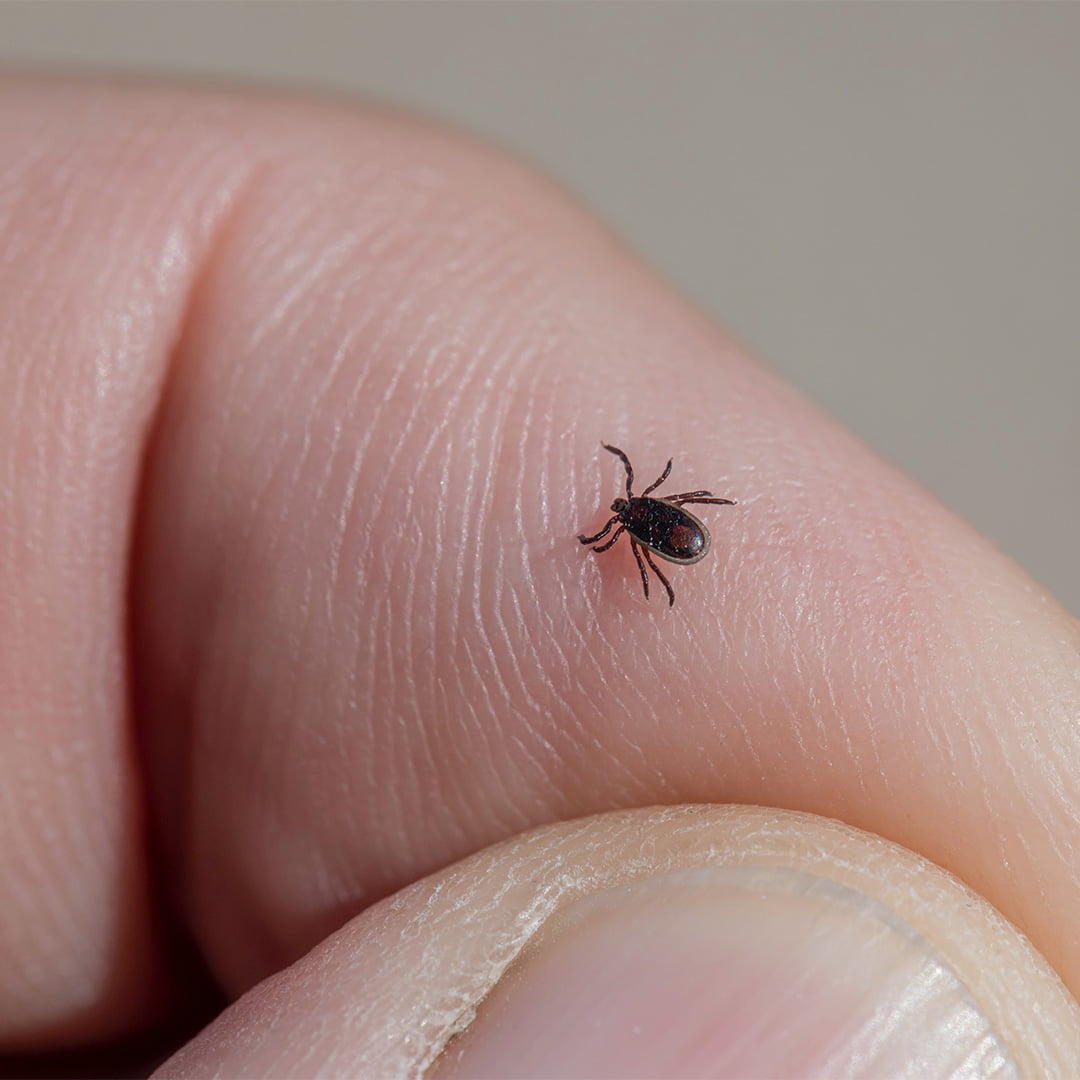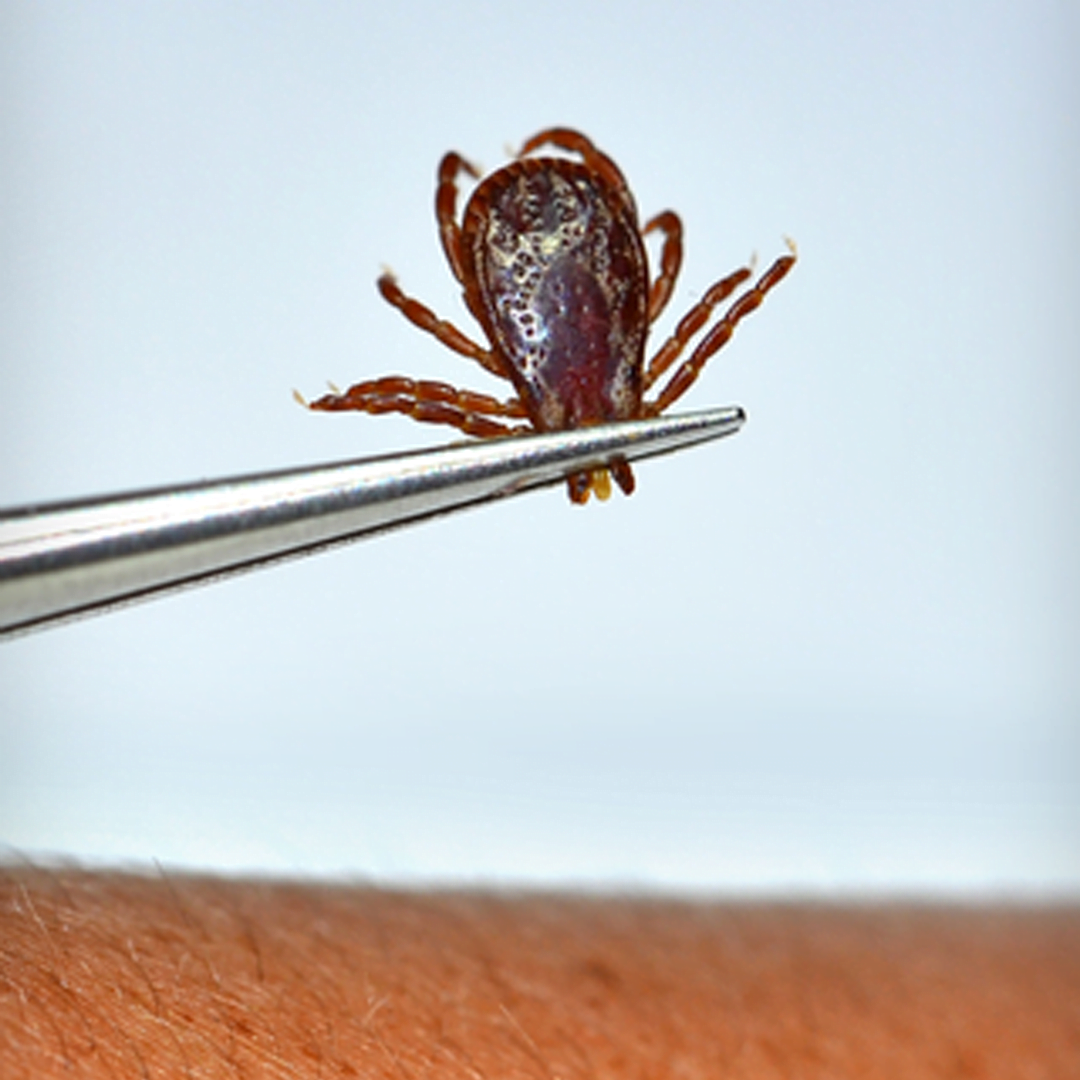Rhipicephalus Sanguineus / Dog Tick

The tick species Rhipicephalus Sanguineus is also called dog tick and is quite common in southern European countries around the Mediterranean. Especially in Spain, France and Italy people are regularly bitten by this brown animal, which can spread the disease Fièvre Boutonneuse.
What does a dog tick look like?
A dog tick has various life stages. The appearance changes per stage of the dog tick and therefore there are different descriptions of a dog tick. Below we describe the different phases of the appearance of a dog tick.
Stage 1: Larva
When the dog tick has just hatched from the egg, we call it a larva. In this stage, the tick has 6 legs and has a blue glow.
Stage 2: Nymph
When the larva has consumed one blood meal, it develops into a nymph. A nymph has 8 legs and is normally brown in color. This color changes to gray when the nymph has sucked itself full of blood.
Stage 3: Adult
When the nymph has consumed another blood meal, it becomes an adult dog tick. The tick continues to have 8 legs and a brown color, but has become larger compared to the previous stage.
A dog tick must consume its blood meals within 200 days. These ticks cannot survive longer than this period without food.
Where can the dog tick be found?
This tick species lives in countries with a warm climate on every continent and therefore also in Europe, where the Rhipicephalus Sanguineus mainly moves in countries around the Mediterranean Sea.
The dog tick likes warm and humid places and prefers to stay on rodents, antelopes, cattle or pets. This tick species is therefore also called the dog tick. Although animals are often the victims of this tick, people can also be bitten by it. This tick species can also survive in nature or in houses. We therefore have anti-tick and flea dog cushions in our range. This cushion is impregnated with substances that are harmful to insects, so that these germs can be repelled.

Tick disease Fièvre Boutonneuse
The Rhipicephalus Sanguineus transmits the disease Fièvre Boutonneuse. The first visible symptom of this disease is an ulcer with a black crust and a red discoloration of the skin after a tick bite. This can be accompanied by swollen lymph nodes. Headache, muscle pain and joint pain can occur and a drop in blood pressure can also be the result of the infection. Sometimes neurological abnormalities and a disruption of the kidney function also occur. Approximately five to seven days after the bite of the dog tick, chills and fever develop, which last for several days to two weeks. Red spots also develop over the entire body after five days. There is no vaccination against this disease. Usually a course of antibiotics is prescribed to treat Fièvre Boutonneuse. When removing the dog tick, it is important that the tick is removed completely (with legs). Therefore, check the color to see what stage the tick is in. Then reason from that point of view how many legs could possibly be in the skin.
